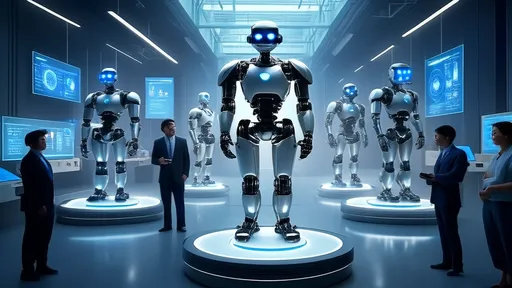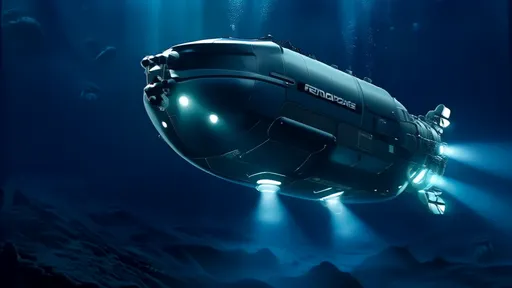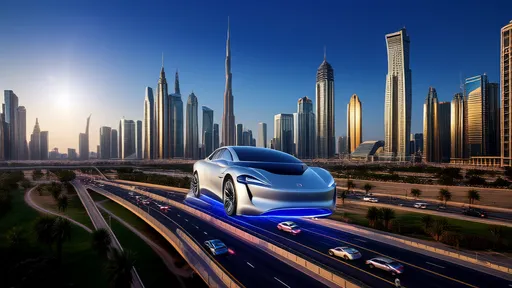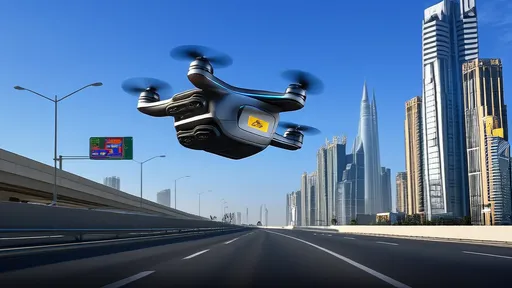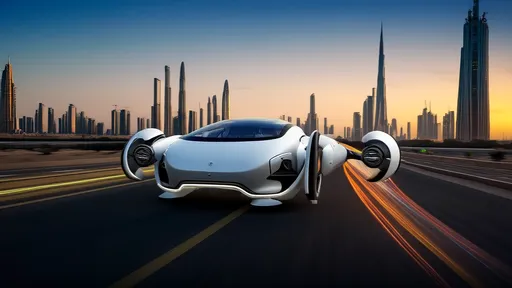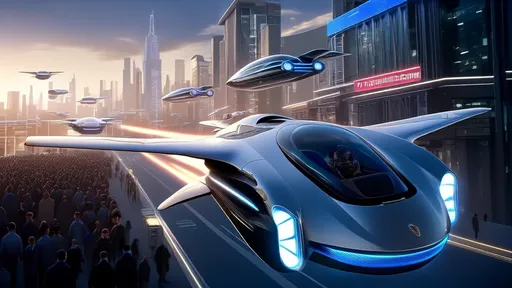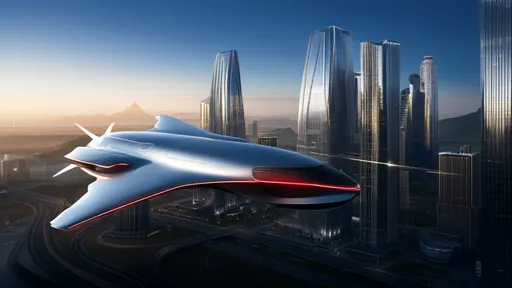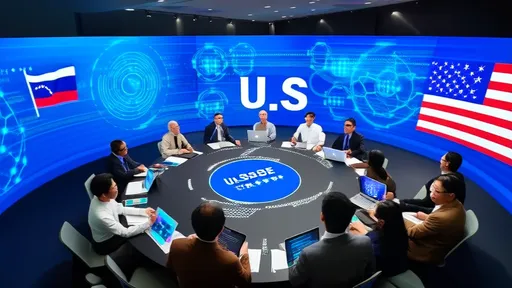In the heart of Dubai's morning rush hour, the familiar gridlock of Sheikh Zayed Road stretches for kilometers below, but above the shimmering asphalt, a new dimension of transportation is quietly rewriting the rules of urban mobility. As first reported by The Times of India, the city's ambitious flying car initiative has transitioned from futuristic concept to operational reality, with commuters now gliding between skyscrapers in electric vertical take-off and landing vehicles. This isn't a scene from a science fiction film but the new daily reality for a growing number of Dubai residents who have traded their terrestrial commutes for the freedom of three-dimensional travel.
The transformation began subtly, with trial routes connecting Dubai International Financial Centre to Palm Jumeirah, but has since expanded to include twelve key corridors across the metropolitan area. What makes this development particularly remarkable is how seamlessly it has integrated into the city's existing transport ecosystem. The flying vehicles don't operate in isolation but connect strategically with metro stations, monorail terminals, and water taxi docks, creating a multi-layered mobility network that effectively decongests the city's notorious road traffic.
Early morning commuters now have the option to bypass the crawling traffic on Emirates Road by taking to the airways. The process has been streamlined to resemble traditional ride-hailing services—users book through a dedicated application, receive confirmation of their aerial taxi, and proceed to designated vertiports located atop specially modified parking structures. The vertiports themselves are architectural marvels, featuring rapid charging stations, passenger lounges with panoramic views, and automated safety checks that ensure each vehicle is airworthy before departure.
Safety concerns, initially the greatest hurdle to public acceptance, have been addressed through multiple redundant systems. Each vehicle operates with triple-redundancy in its flight control systems, emergency parachute deployment capabilities, and real-time monitoring from Dubai's Air Traffic Control center, which has been expanded to manage low-altitude urban air traffic. Pilots—or more accurately, flight operators—undergo rigorous training that exceeds conventional aviation standards, with particular emphasis on urban navigation and emergency procedures specific to dense metropolitan environments.
The environmental impact of this new transportation layer has proven surprisingly positive. The entire fleet operates on battery power, with charging infrastructure powered predominantly by solar energy harvested from vertiport roofs and dedicated solar farms on the city's outskirts. Compared to the carbon emissions from the equivalent number of ground vehicles they replace, the flying cars have reduced corridor emissions by an estimated 68 percent while cutting travel times by nearly three-quarters for regular users.
From a social perspective, the flying car network has begun to reshape Dubai's urban geography. Properties near vertiports have seen valuation increases of 15-20 percent, while the improved connectivity has made previously remote areas of the emirate more accessible. Workers who previously spent two hours each way commuting from Sharjah now complete the journey in under twenty minutes, effectively expanding the city's viable labor market radius without increasing congestion.
The economic implications extend beyond real estate. Dubai has positioned itself as the global hub for urban air mobility technology, attracting startups and established aerospace companies alike. Local universities have launched specialized programs in urban air traffic management and eVTOL engineering, creating a pipeline of talent to support what government projections indicate could become a $4 billion annual industry within the emirate by 2030.
Despite the impressive progress, challenges remain. Noise pollution, while significantly reduced from early prototypes, still requires mitigation in residential areas directly beneath flight paths. Airspace management grows increasingly complex as more vehicles enter service, requiring sophisticated AI-based routing systems to prevent congestion in the sky similar to what exists on the roads below. Regulatory frameworks continue to evolve as authorities balance innovation with public safety concerns.
Public acceptance has grown steadily as the system demonstrates its reliability. Initial surveys showed only 35 percent of residents comfortable with the technology, but that figure has climbed to 78 percent after six months of incident-free operation. The convenience factor has proven decisive—commuters who previously faced unpredictable drive times now experience consistently short journeys regardless of ground conditions.
The success in Dubai has not gone unnoticed by other metropolitan centers. Delegations from Singapore, Tokyo, and Los Angeles have visited to study the implementation, with several announcing plans to develop their own urban air mobility networks. Dubai's model of public-private partnership, with government providing infrastructure and regulation while private companies operate the vehicles, has become the template other cities seek to emulate.
Looking forward, the roadmap includes expanding the network to connect Dubai with adjacent emirates, creating an intercity aerial transportation system that could fundamentally reshape regional connectivity. Vehicle manufacturers are already testing longer-range models capable of making the journey to Abu Dhabi on a single charge, while advances in battery technology promise to further reduce operating costs.
The psychological impact on residents represents another fascinating dimension of this transportation revolution. The daily experience of flying over the city's iconic landmarks—the Burj Khalifa, the Dubai Frame, the twisting Cayan Tower—has created a new relationship between citizens and their urban environment. What was once exclusively the perspective of tourists on helicopter rides has become part of the everyday commute, fostering a unique sense of connection to the city's architecture and layout.
As sunset descends over the Persian Gulf, the flying cars become illuminated points of light moving gracefully between Dubai's glittering towers. The scene embodies the city's relentless pursuit of innovation and its determination to solve urban challenges through technology. The successful implementation of flying car commuting stands as testament to Dubai's ability to transform visionary concepts into practical realities that improve quality of life while positioning the city at the forefront of the next transportation revolution.
The Times of India's coverage highlighted not just the technological achievement but the human story behind this transformation—the parent who now makes it home for dinner with their family, the business owner who can meet clients across the city in a single morning, the medical professional who can reach emergencies in minutes rather than being stuck in traffic. These individual stories collectively illustrate how reimagining urban mobility can fundamentally enhance human connectivity and quality of life in increasingly crowded cities.
The once-fantastical vision of humanoid robots, long confined to the pages of science fiction and the silver screen, is steadily materializing into a tangible engineering reality. This evolution is not the result of a single, monumental breakthrough but rather a profound and intricate symphony of advancements across a multitude of scientific and engineering disciplines. The quest to create machines that not only look but also move, perceive, and interact with the fluidity and adaptability of humans represents one of the most ambitious technological endeavors of our time. It is a grand convergence, where progress in artificial intelligence, materials science, mechanical engineering, and cognitive science coalesces to breathe life into metal and silicon, pushing the boundaries of biomimicry to unprecedented heights.
The recent inclusion of humanoid robots in the 2025 Top Ten Global Engineering Achievements marks a watershed moment in technological history. This recognition transcends mere academic acknowledgment; it represents a collective global validation of decades of research, development, and iterative innovation in robotics. For years, humanoid robots existed primarily in the realms of science fiction and laboratory prototypes, often viewed as fascinating but distant curiosities. Their elevation to a top global engineering feat signals a profound shift—a transition from conceptual marvels to tangible agents of change poised to reshape our societal and industrial landscapes.
In a landmark recognition of human engineering prowess, China's full-ocean-depth manned submersible has been selected among the 2025 Top Ten Global Engineering Achievements, standing shoulder-to-shoulder with revolutionary projects like quantum computing infrastructure and Mars colonization prototypes. This prestigious listing, announced by the International Engineering Consortium earlier this morning, represents more than just technological acknowledgment—it signifies humanity's renewed commitment to conquering Earth's final frontier.
In the heart of Dubai's morning rush hour, the familiar gridlock of Sheikh Zayed Road stretches for kilometers below, but above the shimmering asphalt, a new dimension of transportation is quietly rewriting the rules of urban mobility. As first reported by The Times of India, the city's ambitious flying car initiative has transitioned from futuristic concept to operational reality, with commuters now gliding between skyscrapers in electric vertical take-off and landing vehicles. This isn't a scene from a science fiction film but the new daily reality for a growing number of Dubai residents who have traded their terrestrial commutes for the freedom of three-dimensional travel.
The desert skies of the United Arab Emirates, long dominated by the sleek silhouettes of commercial airliners and private jets, are poised to welcome a new kind of vessel. In a landmark decision that signals a significant leap from science fiction to tangible reality, a specific model of flying car has been granted a special certificate of flight from the UAE's civil aviation authority. This is not merely a provisional test permit for a closed course; it is a crucial regulatory nod that brings the vision of urban air mobility one giant step closer to the daily lives of the region's residents.
In a move signaling a new era of technological collaboration, Southeast Asian nations and the United States are forging a groundbreaking partnership in artificial intelligence development. This strategic alliance emerges at a critical juncture when global AI governance remains fragmented and the technology's potential to reshape economies and societies becomes increasingly apparent. The collaboration represents more than just technical cooperation—it embodies a shared vision for responsible innovation that respects cultural diversity while addressing common challenges.
The Euclid Space Telescope, humanity's newest and most ambitious eye on the cosmos, has begun its monumental mission to pierce the profound darkness that envelops our universe. Launched into the silence beyond our atmosphere, its purpose is not merely to capture stunning celestial portraits but to map the invisible architecture of reality itself. For decades, astronomers have known that the cosmos we see—the glittering tapestry of stars, galaxies, and nebulae—comprises a mere five percent of the total content of the universe. The remaining ninety-five percent is a profound mystery, a dual enigma composed of dark matter and dark energy. These are the phantoms of physics, entities that do not emit, absorb, or reflect light, yet whose gravitational influence dictates the fate of everything we hold visible. Euclid is our most sophisticated attempt to date to bring these shadows into the light, to understand the hidden forces that have shaped the universe's past and will determine its ultimate destiny.
Beijing's National Stadium, once the iconic centerpiece of the 2008 Summer Olympics, echoed with a different kind of applause this week. The thunderous cheers were not for human athletes pushing the limits of physical endurance, but for their mechanical counterparts—humanoid robots competing in the inaugural World Humanoid Robot Sports Games. The air, thick with the whirring of servos and the collective anticipation of engineers and spectators, marked a pivotal moment in the history of robotics and international sport.
The landscape of oncology treatment is undergoing a profound transformation, driven by the emergence of third-generation antibody-drug conjugates (ADCs). These sophisticated therapeutic agents represent a significant leap forward in the quest for precision medicine, offering new hope for patients battling various forms of cancer. Unlike conventional chemotherapy that attacks both healthy and cancerous cells indiscriminately, these advanced biologics deliver potent cytotoxic agents directly to tumor cells, minimizing damage to healthy tissues and reducing debilitating side effects.
In the relentless battle against cancer, a revolutionary class of therapeutics has emerged, earning the evocative moniker of "precision missiles" for their ability to deliver potent cytotoxic agents directly to malignant cells while sparing healthy tissue. These are Antibody-Drug Conjugates, or ADCs, and they represent a sophisticated fusion of biologic targeting and potent chemotherapy, a paradigm shift in oncology that is redefining treatment expectations for a growing number of cancers.
The desert skies above Dubai witnessed a historic moment last week as the sleek silhouette of a flying car cut through the cerulean blue, marking what many industry experts are calling the dawn of a new era in personal transportation. The demonstration, orchestrated by the pioneering aviation firm AeroMobil Emirates, was not merely a test flight; it was a powerful statement of intent, a tangible promise of a future once confined to the pages of science fiction.
In a remarkable demonstration of growing consumer confidence in aerial mobility solutions, global pre-orders for flying cars have surged past the 7,000-unit milestone. This significant threshold, reached far earlier than most industry analysts had projected, signals a fundamental shift in public perception about the viability of personal air transportation. What was once confined to science fiction novels and futuristic concept videos is rapidly transforming into a tangible consumer product category with demonstrated market demand.
In the shimmering heat of the Arabian Gulf, a new silhouette is beginning to pierce the horizon. It is not the familiar form of a commercial airliner nor the sleek profile of a private jet, but something altogether more futuristic—a flying car. This vision, once confined to the realms of science fiction, is fast becoming a tangible reality, and it is Chinese innovation that is poised to turn the skies above Dubai, Abu Dhabi, and Riyadh into a dazzling new theater of urban mobility.
The relentless march of artificial intelligence demands computational power on a scale previously unimaginable. At the heart of this revolution lies the Graphics Processing Unit, or GPU, which has evolved from a specialized graphics rendering component into the primary engine for AI workloads. The latest generation of GPU architectures represents a paradigm shift, not merely an incremental improvement. These new designs are fundamentally re-engineering the silicon to tackle the unique and colossal demands of modern AI, with a core focus on achieving unprecedented levels of computational density and efficiency through hyper-scale integration.
The ASEAN-US AI Cooperation Forum concluded its third annual session this week with a renewed commitment to bridging the digital divide through focused capacity building and infrastructure development. Held against the backdrop of rapid technological advancement, the forum brought together policymakers, industry leaders, and academics to chart a collaborative path forward, recognizing that the benefits of artificial intelligence must be distributed equitably to ensure regional stability and prosperity.

